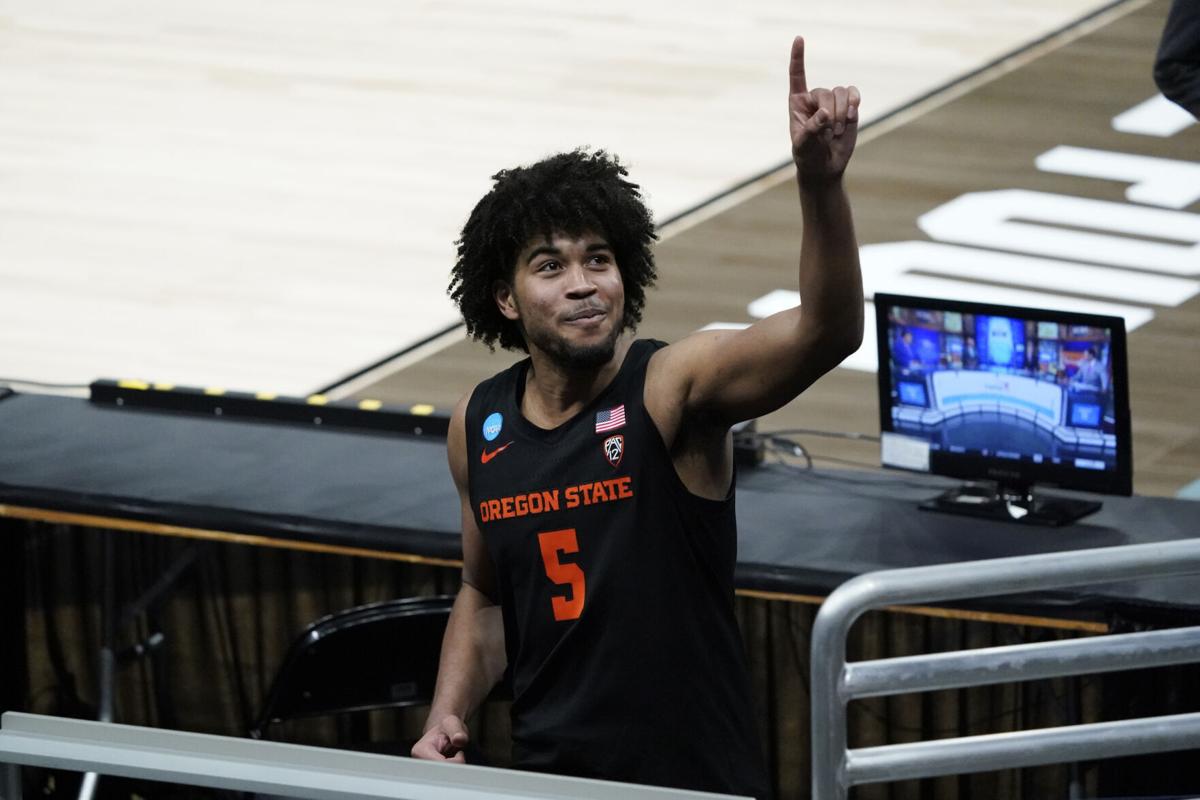Oregon State's advance to the Elite Eight means the Beavers are now responsible for $8.1 million of the conference-record $34.4 million the Pac-12 will haul in over the next six years because of its collective NCAA Tournament performance this season.
While the Beavers deserve loads of credit and respect for playing much better in the postseason than the team that finished in a tie for sixth with Stanford, they also owe a debt of gratitude to Arizona and the Pac-12: To Arizona for effectively handing them a first-round bye in the Pac-12 Tournament, and to the conference's other teams by earning NCAA Tournament shares in years when the Beavers didn't make the event.
Without Arizona sanctioning itself out of the postseason, the Beavers would have had to face Washington in a first-round 6-vs-11 Pac-12 Tournament game on March 10. OSU tied for sixth with Stanford at 10-10 but owned the tiebreaker because the Beavers beat first-place Oregon.
OSU moved up from a No. 6 to a No. 5 seed since UA finished fifth, and because UA's absence also meant the Pac-12 Tournament gave first-round byes to five teams instead of four, the Beavers also did not have to play on March 10.
So instead of a three-game path with wins over UCLA, Oregon and Colorado that earned OSU the Pac-12 Tournament title and the conference's automatic bid, the Beavers would have been a No. 6 seed with a four-game path that looked like this:
March 10 -- First round game against No. 11 Washington.
March 11 (if win on March 10) -- Quarterfinal game against Colorado.
March 12 (if win on March 11) -- Semifinal game against USC, Stanford or Washington State.
March 13 (if win on March 12) -- Championship game against Oregon, UCLA, Arizona or California.
An argument could be made that the Pac-12 might have earned even more if Oregon State had somehow completed this four-game Pac-12 Tournament journey, remained hot into the NCAA Tournament, and Arizona also reached the NCAA Tournament as the conference's sixth team -- though it is possible the Beavers' bid-stealing and Wildcats' presence might have bumped UCLA out of the field.
In any case, here's the latest math: Each "unit" (appearance in an NCAA Tournament game) is worth $337,141. The total of all a conference's units are paid every year over each of the next six years and then the Pac-12 divides that sum out equally among its 12 members.
Since Oregon State has now (COVID-permitting) guaranteed itself four game appearances, that's $337,141 multiplied by four ($1.35 million) over each of the next six years ($8.1 million).
Distributed equally between the conference's 12 teams, that means Arizona and every other Pac-12 team will receive at least $674,282 over the next six years because of what the Beavers have done so far. (However, the NCAA could wind up asking Arizona to pay some of its proceeds back).
In all, the Pac-12 has guaranteed itself a conference-record-tying 17 units so far, counting an Elite Eight appearance by whatever team wins Sunday's USC-Oregon game, and it will get an 18th unit if UCLA beats Alabama on Sunday. The 17 units represents $5.73 million per year or $34.4 million total -- or $2.87 million per year, per team for the next six years.
That's more than enough for each school, on average, to pay a men's basketball coach's salary each season (though Utah's hiring of Craig Smith is raising that bar again).





